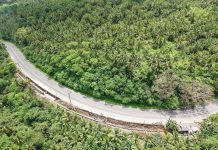PALO, Leyte – The Philippine Institute of Volcanology and Seismology (Philvocs) has reported more than a thousand aftershocks three weeks after the magnitude 6.5 earthquake that rocked Leyte last July 6.
As of July 27, 1,035 aftershocks with magnitude ranging from 1.5 to 5.8 were recorded by the agency, according to an update of the Regional Disaster Risk Reduction Management Council.
About 33 tremors were categorized by Philvocs as felt.
Myra Dolina, Phivolcs Eastern Visayas science research analyst, said the magnitude of ground movements after a strong earthquake is normal within several weeks.
“If the fault line moves a lot, it releases energy that can cause weak earthquakes, but we must wonder if it didn’t move in a year because it stores energy that can cause a strong earthquake,” Dolina added.
Most aftershocks had its epicenter in Ormoc City and nearby Kananga town, the two most affected areas.
These areas are within the Central Leyte Fault line from Barangay Villalon, Calubian, Leyte and ends in San Francisco, Southern Leyte.
The active fault line forms part of the 1,200-kilometer long Philippine Fault Zone extending throughout the country.
The July 6 earthquake has killed at least three people and injured 310 others. Several aftershocks rocked the province in nearly two weeks. The strongest was magnitude 5.8 that injured 78 people.
Initially, government agencies identified a total of 113 schools, 10 health facilities, 35 government buildings, and seven commercial buildings in Leyte province as badly damaged by the tremor.
(MELVA MAE C. MENIANO)



